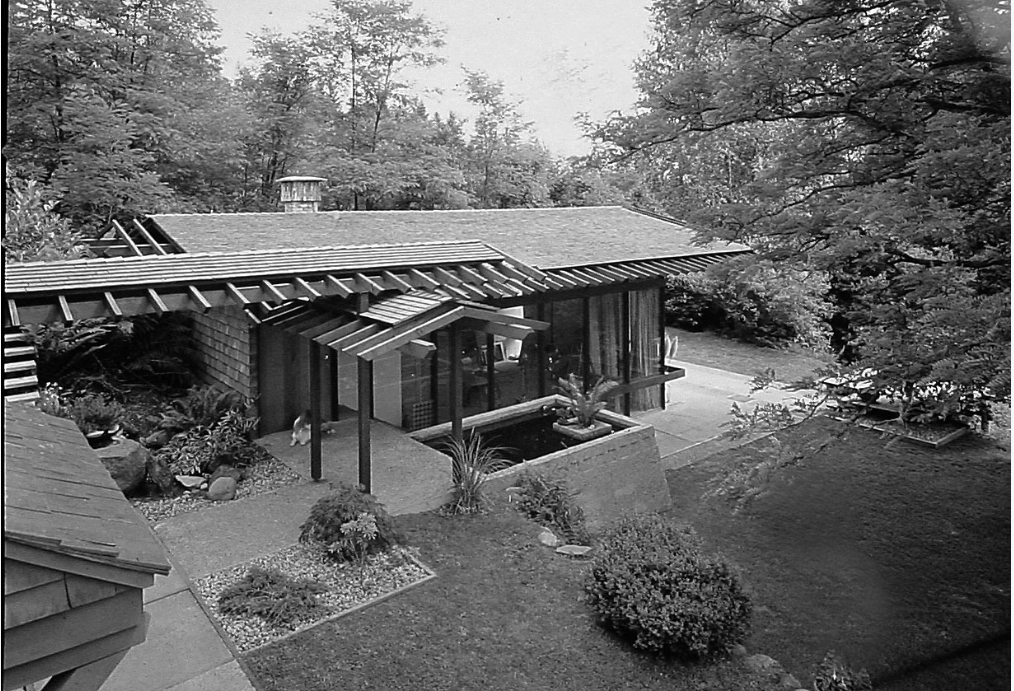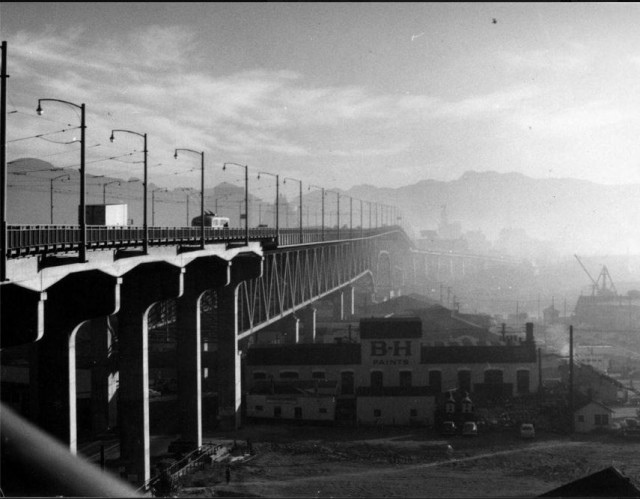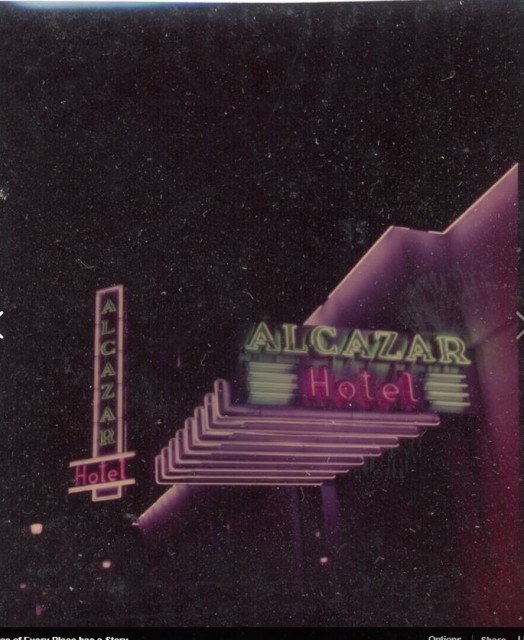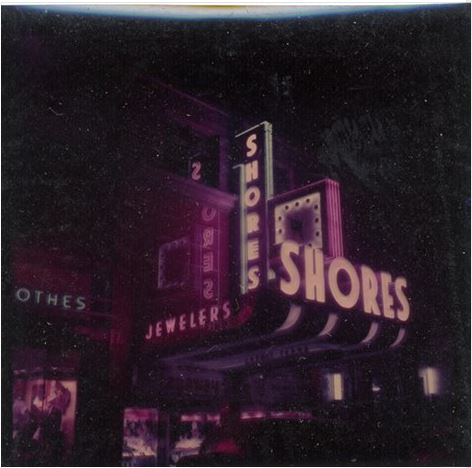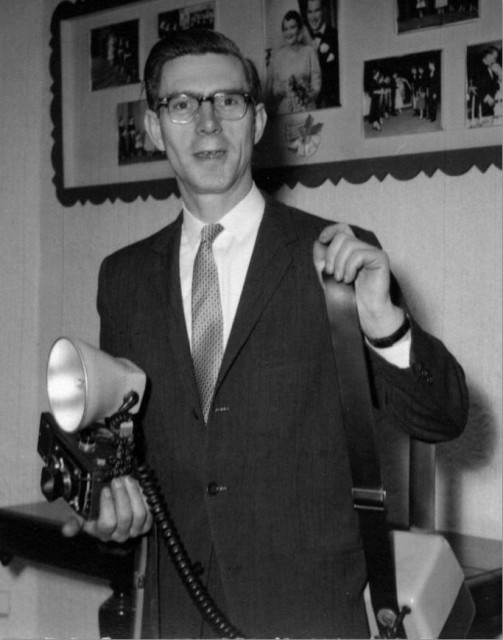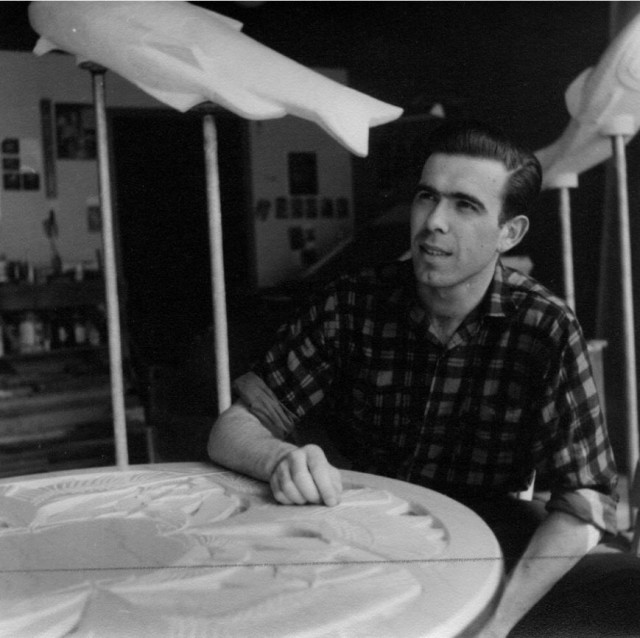George Norris was born in Victoria in 1928. He studied at the Vancouver School of Art. His sculptures are spread around Vancouver, Victoria and Calgary, but his most famous is probably The Crab (1967) that sits outside the Museum of Vancouver.
Last week I had the pleasure of writing about Svend-Erik Eriksen and showcasing some of his fabulous photos of early Vancouver. I’ve been running a different photo on my Facebook page each day this week, and this one of the people lined up to catch a bus outside Eatons at Granville and Georgia really caught my eye.
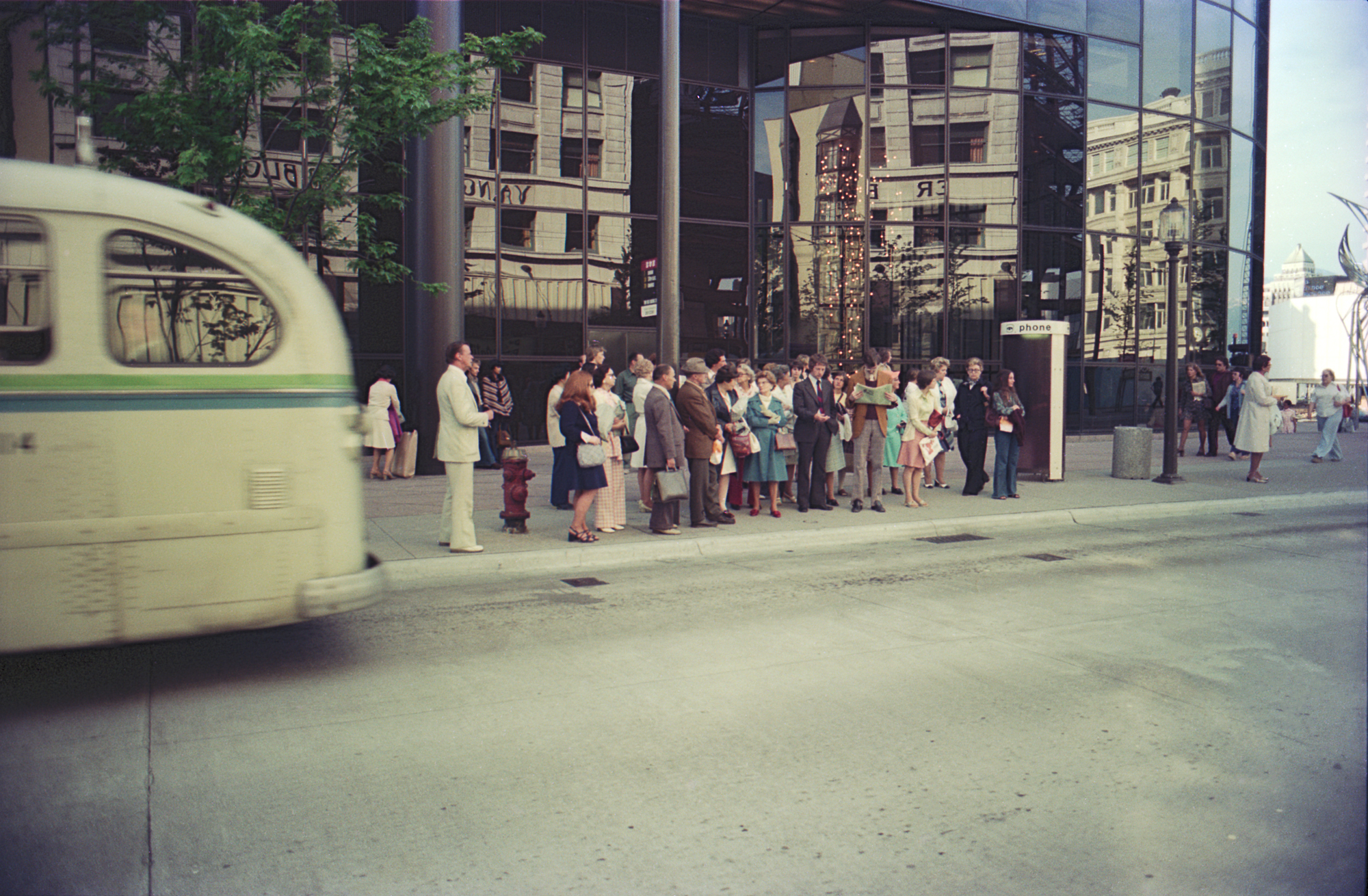
There’s so much going on from the clothes of those waiting for the Brill trolley bus to the Clark Kent-style telephone booth. But I was curious about the sculpture shown right of frame.
It was created by George Norris, and if you haven’t heard of him, I’m sure you know his work.
The Crab (1967)
His famous crab sculpture sits outside the Museum of Vancouver and if you spend any time on the North Shore, you’ll recognize his 1971 fountain sculpture at the corner of Capilano Road and Ridgewood Drive.
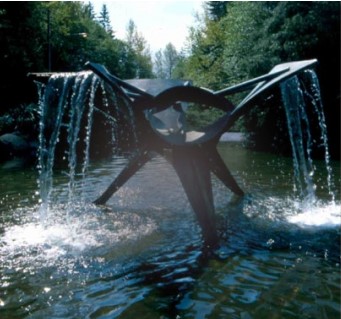
He created the concrete frieze outside Postal Station D on Pine Street (1967), Mother and Child at UBC’s East Mall (1955) and a terracotta and brick sculpture outside UBC’s Metallurgy building (1968).
Pacific Centre:
In 1973, he was commissioned to design a sculpture for the newly created plaza outside the TD Bank building at Granville and Georgia.
The polished steel sculpture took him a year to create and was 13.5 metres high–roughly the height of a four-storey building. “It’s an abstract piece and I’ve attempted to give a sense of release to the space that is free and open. I wanted people to see it their own way, so it has no name,” he said at the time.
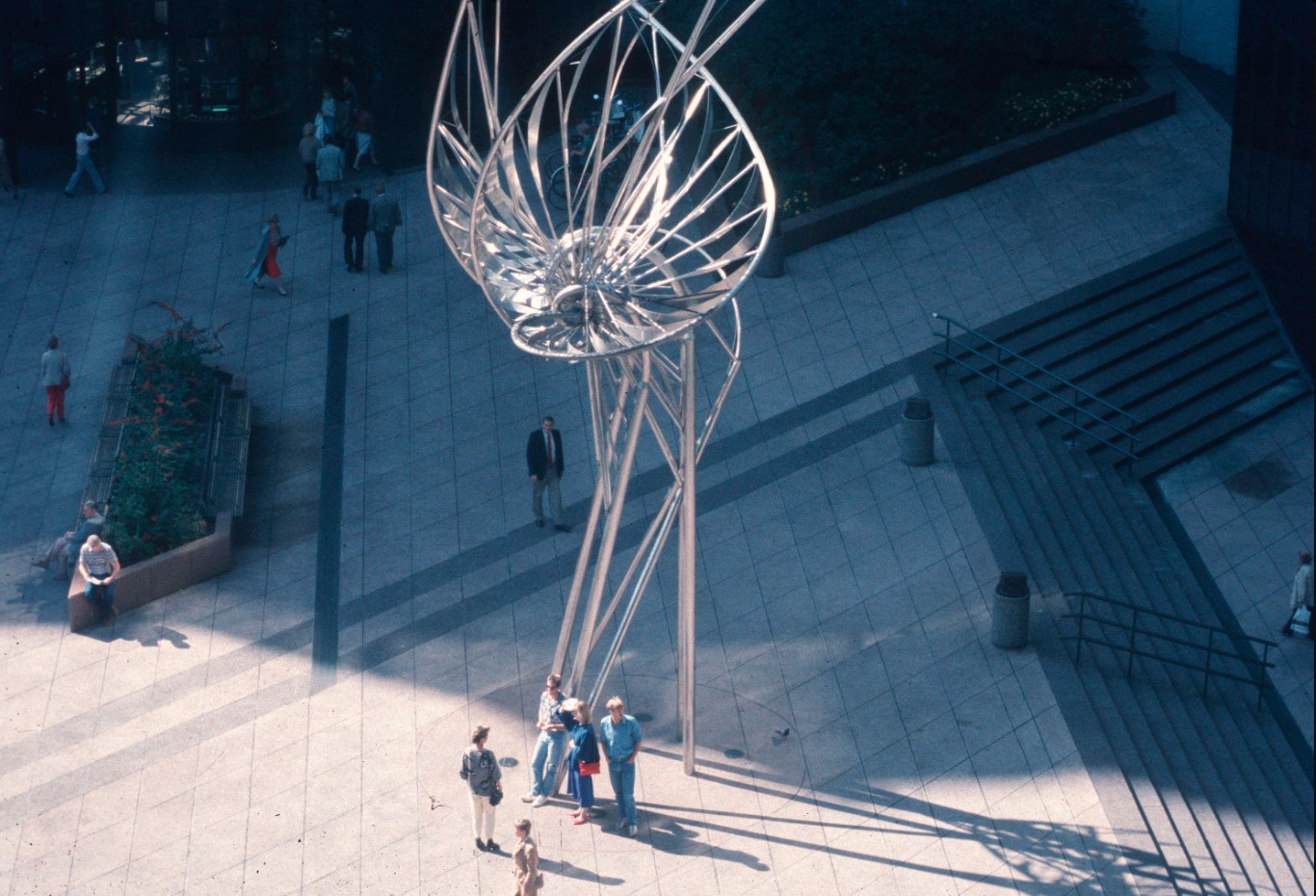
At the time of its conception, Norris had fought for a plaza that also included trees and shrubs. “But they weren’t interested because they wanted to get everybody down into the underground mall like moles,” he told a Sun reporter in 1987.
Scrapped:
George was understandably upset because Pacific Centre had decided his work was “no longer appropriate” for a planned redesign of the plaza. And, the piece which cost more than $30,000 and by then valued at $50,000, was shipped off to Surrey.
Surrey couldn’t figure out what to do with it, so the city took it apart and put it into storage. A few years later, a worker came across it and thinking it was scrap metal sent it off for recycling. When city manager Doug Lychak was called out on it, he told a reporter: “It was an honest mistake.” Or in other words, shit happens.
“The sculpture to me was like a silent song,” said Norris who died in 2013.
For more on George Norris’s work see:
- Murray Maisey’s Vancouver as it Was blog
- Public Art in Vancouver
© All rights reserved. Unless otherwise indicated, all blog content copyright Eve Lazarus.




